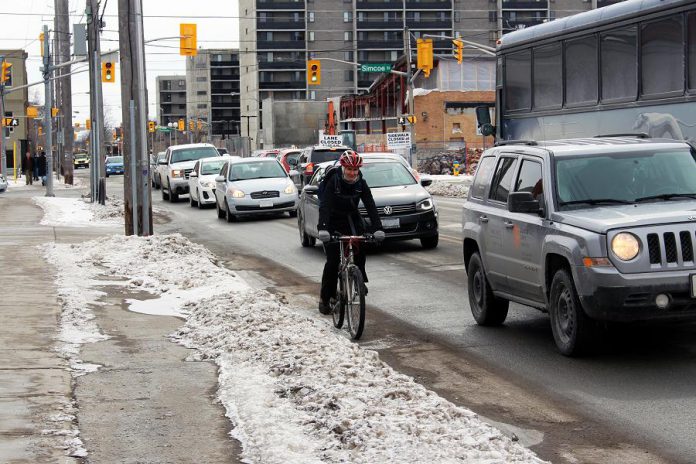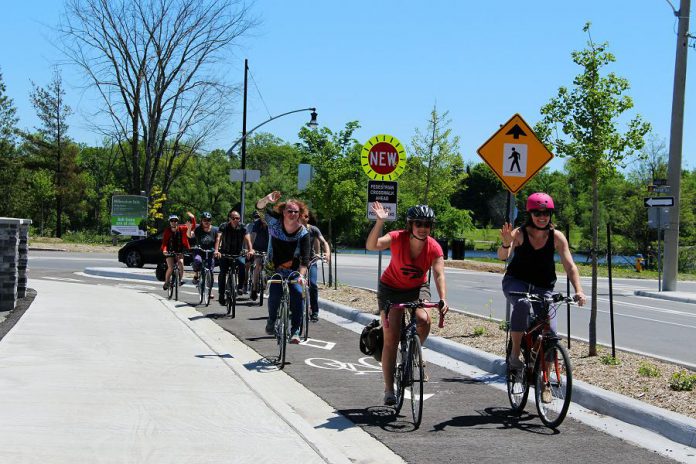
‘Tis the season to refocus on road safety tips that keep us all safe on sometimes slippery roads with reduced visibility. With the arrival of winter weather, conversations have turned to winter tires and defensive driving skills. However, special equipment and driver behaviour are just the start of the road safety conversation, and strategies for road safety in North America have begun to take a more holistic approach.
Globally, roads are the biggest cause of death for children and young adults. Here in Canada, approximately 2,000 people are killed and 165,000 injured on our roads each year. This costs $37 billion, or 2.2 per cent of the Canadian GDP. Of course, the costs felt when loved ones are killed or injured on our roads extend far beyond financial calculations.
These financial and psychological costs are some reasons why Canada’s Road Safety Strategy 2025 embraced moving toward zero and adopting a safe system approach. Setting a target of moving toward zero refers to the Vision Zero movement, where cities across the globe are aiming for zero deaths and serious injuries on our roads.
Working from a safe systems approach places human life and health as top priority on our roadways. A safe systems approach also requires that the responsibility for road safety be shared among all road users and supports roadway designs that seek to minimize human error and harm.
Since the 1950s, our roads have primarily been designed to enhance the smooth flow of motorized vehicles. The wider lanes, large intersections, and faster speeds that resulted from decades of engineering our roads in this way present challenges and dangers — especially to vulnerable road users such as pedestrians and cyclists.

Conversely, roads designed from a safe systems approach aim to consider the safety of all road users. On streets that are shared with cyclists, these designs often incorporate narrower lanes, tighter corners, sidewalks, bike lanes, and trees.
These features tend to lead to more cautious driving and more attention given to other users of the street. When you build for bikes, you improve safety for all road users too!
When New York City added protected bike lanes, injury crashes for all road users reduced by 40 per cent over four years.
Similarly, in Toronto a safety review of the Bloor Street bike lanes found a 44 per cent decrease in overall road conflicts, while in Ottawa a safety review of the Laurier Avenue separated bike lane showed a decrease in the collision rate for pedestrians by 50 per cent.
For pedestrians, adding a bike lane to a street provides a welcome buffer between the pedestrian and larger vehicles, while also providing more distance from vehicle exhaust and noise. Protected bike lanes can also act to shorten crossing distances for pedestrians at intersections. Finally, studies have also shown that the presence of bike lanes reduces the number of sidewalk bike riders — which removes another safety hazard for pedestrians.
Drivers receive a number of safety benefits with the addition of protected bike lanes, too. Decreases in crashes resulting in fatalities and injury have been observed in numerous cities across North America when separated bike infrastructure is put in place.
A study published in the Journal of Transport and Health found that with added separated bike lanes, fatal crash rates dropped in Seattle by 60.6 per cent, in San Francisco by 49.3 per cent, in Denver by 40.3 per cent, in Chicago by 38.2 per cent, and in Portland by a whopping 75 per cent.

Drivers also report feeling safer when bike lanes are installed. The bike lanes alert drivers to the possible presence of bikes, and the added separation makes both drivers and cyclists feel more comfortable. No longer is there the need to slow down behind (or speed up to pass) bikes travelling in the same lane. The separation allows both bikes and larger vehicles to travel smoothly with fewer interruptions.
As you’re travelling this winter, imagine what our cities could look like if we spent the next 50 years building our streets from a safe systems approach. Setting the stage for safe travel with road designs and infrastructure that keep our most vulnerable road users safe is an evidence-informed and long-term approach to achieving Vision Zero.
Championing this strategy may just help us to reach Canada’s Road Safety goal of moving toward zero serious injuries and fatalities for everyone!
In 2018 the provincial voice for cycling, Share the Road, released an infographic titled Bikes Can Do That! It details seven benefits that can be achieved when bikes become the daily vehicle of choice for more people in your community.
Throughout 2019, GreenUP will be exploring the benefits that can be achieved by a city and its residents, when it commits to valuing the bike as a significant, useful, (and fun) mode of transportation, through the #BikesCanDoThat series. This is the sixth article in the series. Also check out Reduce traffic congestion? Bikes can do that., Want to build a vibrant downtown? Bikes can do that., Want to promote active living? Bikes can do that., Want to attract tourists? Bikes can do that., and Want to make life more affordable and equitable? Bikes can do that.
If you’d like to contribute ideas to the #BikesCanDoThat series, please contact Lindsay Stroud, Manager of Transportation and Urban Design Programs at GreenUP, at 705-745-3238 or lindsay.stroud@greenup.on.ca.


























